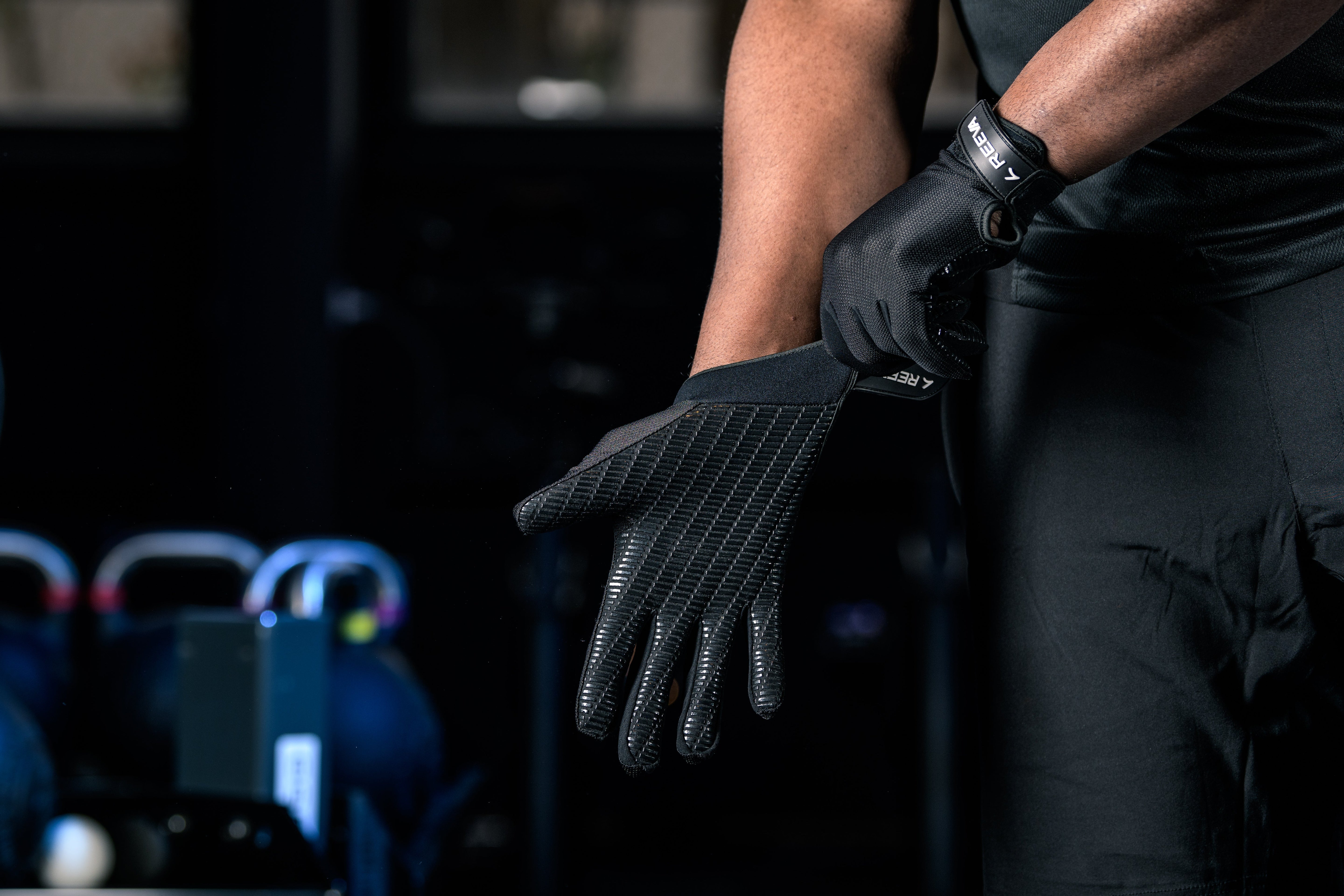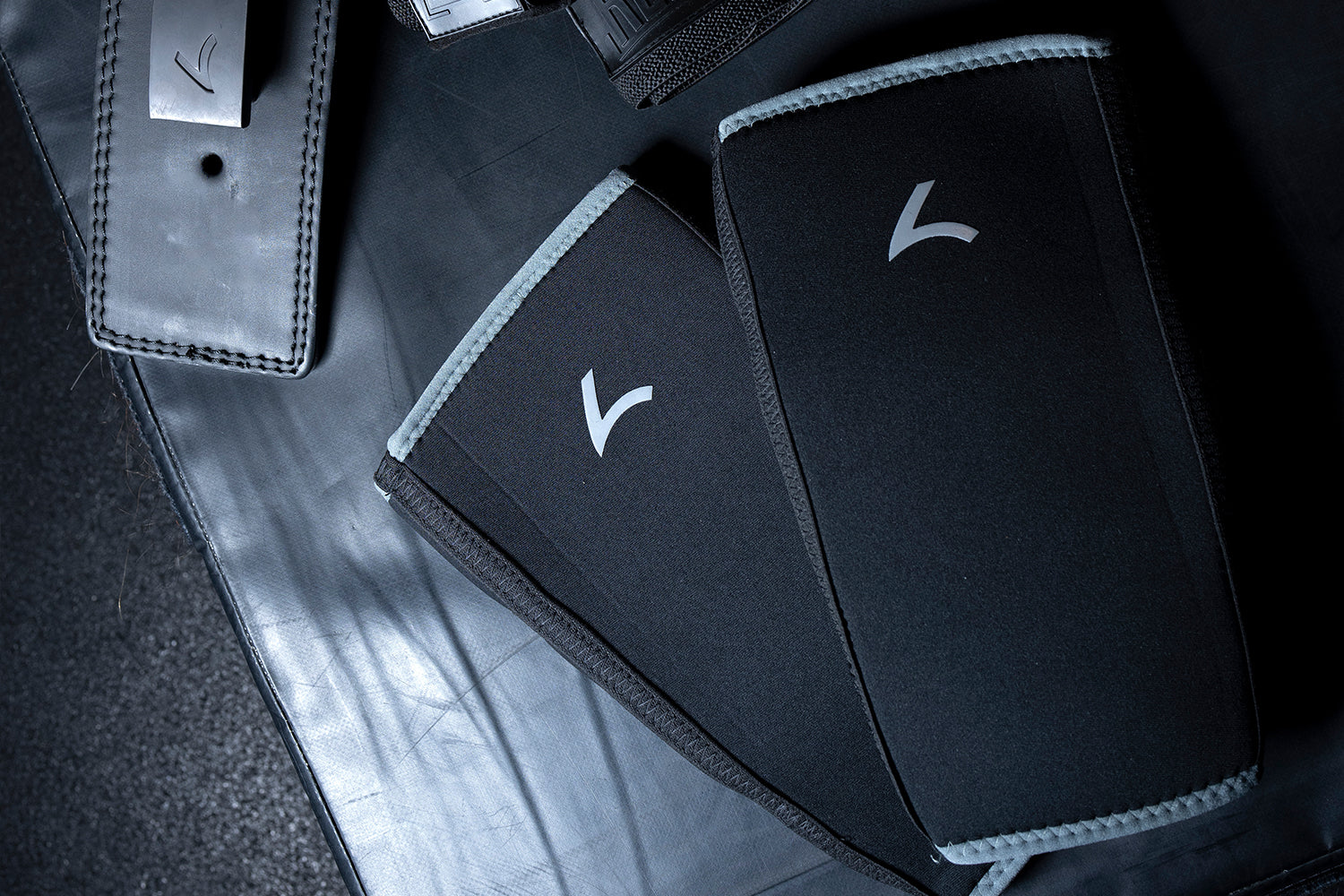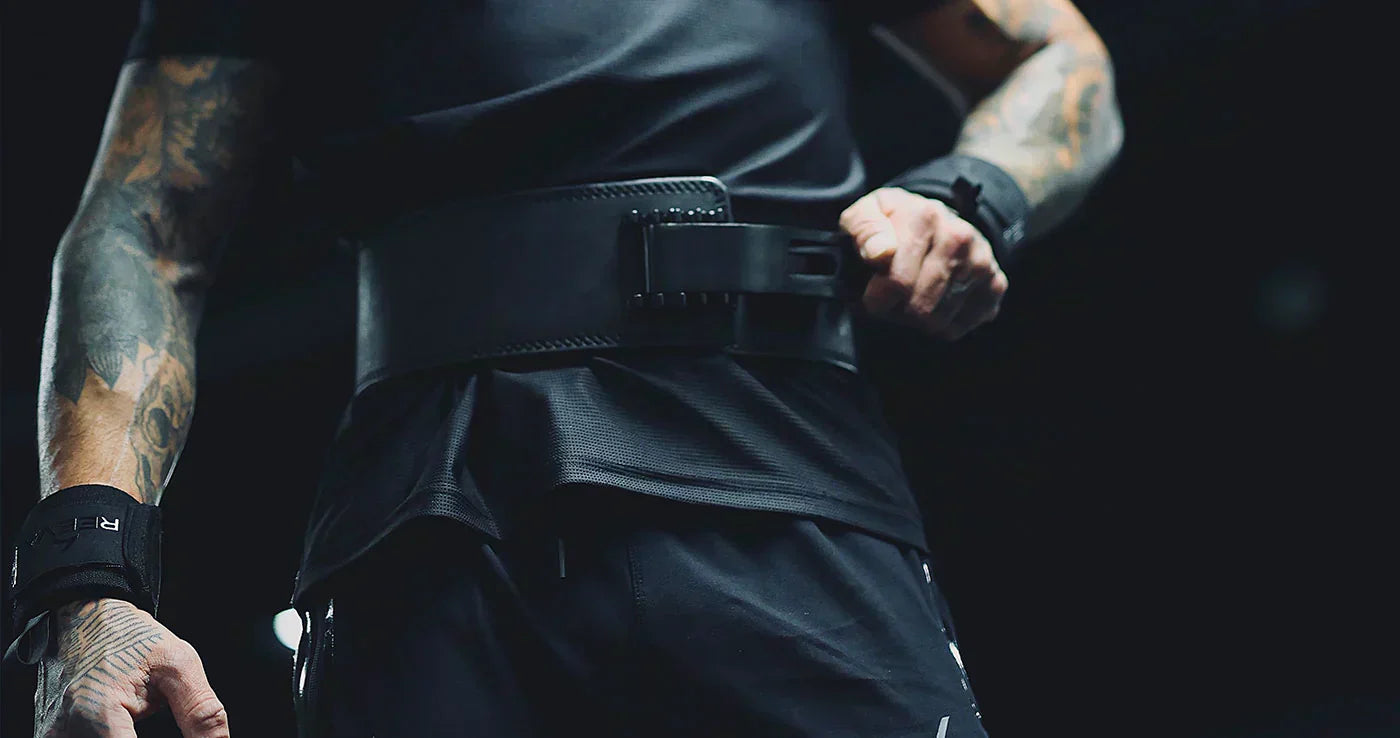Introduction: When your grip starts slipping during heavy lifts, you might wonder whether to invest in lifting straps or padded gloves. Both pieces of gear can enhance your hold on the weights, but they do so in different ways. Fitness experts note there’s no absolute “right or wrong” choice – straps and gloves each have their own benefits and are suited to different goals. This article will break down what lifting straps and gloves are, how they differ, and how each can improve (or limit) your grip, so you can decide which is best for your training needs.
Lifting Straps: Pros and Cons
Lifting straps are long, sturdy strips of material (usually cotton, nylon, or leather) that loop around your wrist and the barbell or dumbbell, essentially strapping your hand to the weight. By securing your hands to the bar, straps reinforce your grip and let you lift heavier weights without your fingers giving out. They’re mainly used for pulling exercises – think heavy deadlifts, rows, pull-ups, or shrugs – where grip strength often becomes the limiting factor before the larger muscles (like your back or hamstrings) are fully taxed. In other words, lifting straps help you lift beyond your natural grip limits on those max-effort pulls.
Pros of Using Lifting Straps
-
Lift Heavier Beyond Grip Failure: The biggest advantage of straps is that they allow you to handle more weight than your bare grip can hold. Powerlifters and bodybuilders often use straps on heaviest sets (e.g. deadlifts) so grip fatigue doesn’t cut their set short. By literally locking your hands to the bar, straps let you continue pulling even when your forearms or fingers would normally give out. This means you can fully exhaust the target muscles (back, traps, etc.) without being limited by grip strength.
-
Reduce Grip Fatigue & Focus on Target Muscles: Because straps take strain off your hands, your forearms and biceps don’t fatigue as quickly during pulling motions. This reduction in grip reliance lets you concentrate on form and engaging the intended muscle groups. For example, on a heavy barbell row, straps shift the effort to your lats and traps rather than your forearms, helping you maintain better technique and mind-muscle connection.
-
Added Safety – No More Dropping the Bar: A strap essentially attaches the weight to you, greatly reducing the chance of a heavy barbell slipping out of your hands mid-lift. This gives many lifters more confidence to attempt PR-level weights without fear of a dangerous drop. The secure grip provided by straps can be a safeguard against accidents, especially on exercises like deadlifts where a slipping bar could injure you or others.
-
Push Through Plateaus Faster: By eliminating grip failure, lifting straps can help you overload the bigger muscle groups and break through strength plateaus. Without straps, your deadlift might be stuck because your hands can’t hold any more weight. With straps, you can keep increasing the load and making progress on pulling movements. In essence, they allow you to train beyond your grip, which can lead to quicker strength and muscle gains in the muscles you’re targeting. Many experienced lifters view straps as a crucial tool for maximizing performance on heavy pull days.
Cons of Using Lifting Straps
-
Limited to Pulling Movements: Lifting straps are only useful for pull exercises and heavy lifts where grip is the bottleneck. You can’t (and wouldn’t) use straps for pushing exercises like bench presses or overhead presses. In fact, you’ll likely only put them on for sets of deadlifts, rows, weighted pull-ups, etc. Since they wrap around the bar, they simply don’t work for exercises where you need to let go quickly or where grip isn’t a factor. This means their functionality is specific and somewhat narrow – they’re a specialty accessory, not an all-purpose solution.
-
Not Very Beginner-Friendly: If you’re new to weightlifting, straps can be overkill or even a hindrance. First, they require a bit of technique to put on and use correctly – threading the strap and tightening it around the bar takes practice. Also, beginners typically aren’t lifting weights heavy enough to need straps; early on, it’s better to develop your natural grip strength. Fitness coaches often recommend novices build base grip strength before relying on straps. In short, gym gloves or just bare hands are far simpler for a beginner, whereas straps come into play when you’re moving truly heavy weight that taxes your grip.
-
Can Lead to Grip Weakness if Overused: While straps let you bypass grip limitations, using them all the time may cause you to neglect developing grip strength. If you strap up for every pulling exercise, your forearms and gripping muscles don’t get trained as hard and could lag behind. Over-reliance on straps has the potential to decrease your natural grip strength over time. The key is to use straps strategically (for your heaviest sets or final reps) rather than for every lift. You should still train your grip through exercises like farmer’s walks, dead hangs, or by occasionally lifting without assistance. That way, you get the benefits of straps without becoming completely dependent on them.

Lifting Gloves: Pros and Cons
Lifting gloves (aka weightlifting or gym gloves) are exactly what they sound like – gloves designed for weight training. They typically have a padded palm and cut-off fingers, and sometimes include wrist wrap support as part of the glove design. Unlike straps, gloves do not physically bind you to the bar. Instead, they provide a layer of material between your hands and the barbell, which can improve comfort, prevent calluses, and enhance grip friction to a degree. Gym gloves can be used on a wide variety of exercises – both pulling and pushing movements – and are popular among casual and intermediate lifters who prioritize hand protection and comfort over maximal lifting performance.
Pros of Using Lifting Gloves
-
Prevents Calluses and Protects Your Hands: One of the main reasons people wear gloves in the gym is to avoid the rough calluses, blisters, and torn skin that can come from gripping iron bars. The padded palms on lifting gloves act as a buffer, so the knurled steel doesn’t dig directly into your skin. If you take pride in keeping your hands smooth – or you simply don’t want painful torn calluses – gloves are an easy solution. They allow you to lift without the hard friction, meaning less skin damage over time. This is especially beneficial during high-rep training or volume work that would otherwise leave your hands raw.
-
Better Comfort & Grip Security (Especially with Sweaty Hands): Gloves can make weight training more comfortable overall. The padding cushions your palms and can alleviate pressure points when pressing dumbbells or holding a pull-up bar. Additionally, if you tend to get sweaty palms, gloves absorb sweat and provide a less slippery surface to hold onto. This extra grip traction can give you more confidence in exercises like pull-ups or bent-over rows, where a slick grip could cause the bar to slide. Essentially, gloves keep your hands dry and improve your hold, albeit not to the same degree as straps do for max weights.
-
Some Wrist Support in Certain Gloves: Many weightlifting gloves come with integrated wrist wraps or a velcro strap that tightens around your wrist. These can offer mild wrist support, helping keep your wrists in a neutral position during pressing movements. While dedicated wrist wraps are more effective for support, the built-in support of gloves is a convenient bonus for those who want a bit of stabilization on exercises like bench press, overhead press, or dips. It’s a way to get two functions (hand protection and wrist support) in one piece of gear.
-
Versatile and Easy to Use: Unlike straps that you put on only for certain sets, gloves can be worn throughout your entire workout. They’re very versatile – you can use them for practically any exercise, whether it’s a pulling exercise like lat pulldowns or a pushing exercise like bench press. You don’t have to take them on and off; just slip them on at the start of your session and you’re good to go. This makes them convenient for circuit training or WODs where you’re quickly moving between exercises. Additionally, there’s virtually no learning curve – even a first-time gym-goer can put on gloves and start lifting confidently (one reason they’re popular among beginners). In short, gloves are beginner-friendly and hassle-free.
Cons of Using Lifting Gloves
-
Can Inhibit Grip Strength Development: While gloves improve your subjective grip comfort, they may actually reduce the training stimulus for your grip. The extra padding means you don’t have to squeeze the bar as tightly, and the glove material adds thickness to the bar handle. Over time, always relying on gloves might hinder your grip strength progress – you become accustomed to the artificial assist they provide. In fact, because gloves make the bar effectively thicker to hold, they can make lifts feel harder for your forearm and hand muscles, potentially weakening your raw grip if you never train without them. Lifters concerned with building a strong natural grip often avoid full-time glove use for this reason.
-
Padding Can Alter Your Technique: The physical barrier of the glove can subtly change how the bar sits in your hand. In exercises that demand technical precision (like Olympic lifts or heavy deadlifts), this can be a downside. The “cushion” might affect bar grip position, and you might not feel the bar as well as with bare hands, which some argue could lead to poor form habits. For example, in a power clean, thick gloves could interfere with how you catch the bar. Additionally, because gloves add a bit of bounce/compression, you might lose some direct feedback from the bar. Many powerlifters and strength athletes avoid gloves for heavy barbell work, finding that the extra material impairs a secure grip and proper form on maximal lifts.
-
Not as Effective for Extreme Weights: If your goal is to pull the absolute heaviest weights possible, gloves won’t help you the way straps can. Gloves improve comfort and prevent slippage to a point, but they do not actually increase your grip capacity – they don’t attach you to the bar. In fact, very heavy weight can even cause the glove to slide or your hand to shift inside the glove. For maximal deadlifts or rack pulls, most lifters find gloves insufficient for grip support; at heavy loads, the bar can still roll out, and the glove’s material might even create more slip once the weight gets huge. The thick material of heavy-duty gloves can also be a hindrance on big lifts – it’s harder to hook your hand tightly around a bar when wearing a glove, compared to chalked bare hands or using straps. In summary, gloves are great for moderate lifting and general training, but they’re not the go-to for one-rep-max attempts.
-
Hygiene and Comfort Factors: One minor drawback to consider is that gloves can get sweaty and smelly over time, especially if you’re doing intense workouts. They require regular washing or they’ll harbor bacteria. Also, if the gloves are poorly fitted, they might pinch or rub your skin, causing discomfort or hot spots during exercise. These issues can usually be mitigated by choosing high-quality, breathable gloves and keeping them clean, but it’s worth noting that gloves do add an extra layer (literally) to manage during your training.

Straps or Gloves: Which One Should You Use?
Choosing between lifting straps and lifting gloves ultimately comes down to your training goals and personal preferences. Each has a clear purpose:
-
If you are focused on maximizing strength and lifting heavy weights, especially on pulling exercises, lifting straps are likely the better tool. Straps shine when your aim is to overload big muscle groups without being limited by grip. For example, a powerlifter or dedicated strength athlete will benefit from using straps on heavy deadlifts, barbell rows, shrugs, etc., to push their posterior-chain muscles to the limit. Straps allow you to maintain intensity on those heavy sets and can be a game-changer for hitting new PRs. In short, choose straps if performance and progression on big lifts are your top priority – they’ll let you lift heavier for longer by reducing grip fatigue.
-
If you prioritize overall comfort, hand care, and general fitness training, lifting gloves might be more your style. Gloves are ideal for the casual lifter or anyone who dislikes rough callused hands. They’ll give you a better grip feel during high-rep workouts, machine exercises, and moderate-weight lifting, all while keeping your palms pain-free. For someone who isn’t maxing out on deadlifts but wants a secure, comfortable grip and protection from blisters during workouts, gloves are the way to go. They’re also great if you do a variety of exercises (including pushing movements or circuit training) since you can wear them throughout and enjoy the added comfort and wrist support. In summary, choose gloves if comfort, grip convenience, and hand protection matter more to you than squeezing out the last bit of lifting capacity.
It’s worth noting that this isn’t necessarily an either/or decision. Many experienced lifters keep both in their gym bag – using gloves for lighter sessions or high-volume training, and strapping up for the heaviest sets on pull exercises. As one fitness blog concluded, “There is no winner! ... New lifters tend to use gloves due to the comfort and support, while more experienced lifters prefer straps as a tool to develop strength and muscular growth.” Ultimately, you may decide to have the best of both worlds: wear gloves when you want comfort and protection, and use straps when you need that extra grip assistance for a monster lift.
Conclusion: Lifting straps and lifting gloves each improve your grip in different ways. Straps let you defy your grip limits to hoist heavier weights, whereas gloves make training more comfortable and prevent wear and tear on your hands. Think about your goals – are you chasing strength and muscle PRs, or do you mainly want a better grip feel and healthy hands during exercise? Match your choice to your goals and don’t be afraid to use both if you find value in each. If you’re aiming to build a bigger, stronger back and pull serious weight, a pair of high-quality lifting straps (such as Reeva’s durable cotton straps) will be your best friend. On the other hand, if keeping your hands cushioned and callus-free is the goal, you might opt for Reeva’s comfortable lifting gloves for everyday training. In the end, the best grip aid is the one that helps you train better – so grab the straps or gloves that fit your needs and get lifting!




